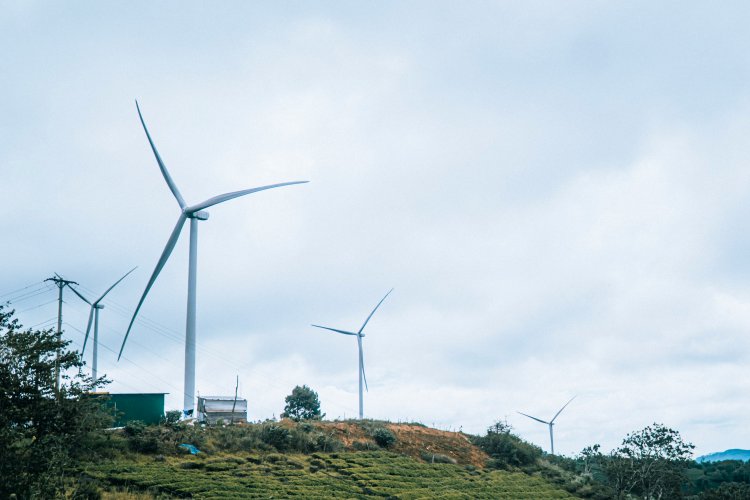Despite urgent global calls to accelerate climate technology and cut emissions, investment in the sector is slowing. The once-robust funding ecosystem for climate tech startups is now showing signs of strain. Private equity and venture capital inflows into the space have declined notably over the past two years—globally and in India.
According to PitchBook, global climate tech investment fell from $51 billion in 2023 to $41.1 billion in 2024—a drop of nearly 14.5%. A separate PwC study notes that this decline is part of a broader slowdown in deal-making triggered by high interest rates and economic uncertainty.
READ | India’s fuel exports face supply shock amid fresh sanctions against Russia
A sharp decline in investment
In India, the contraction has been more severe. Climate tech funding fell from $1.66 billion across 157 deals in 2023 to $910 million in 2024. In the first half of 2025, only $270 million was raised through 37 deals, as per data from Tracxn. The average deal size has also shrunk, halving from $10.57 million in 2023 to $5.5 million this year.
The largest deal so far in 2025 came from Euler Motors, which secured $75 million from British International Investment and Hero MotoCorp.
While overall sentiment has weakened, certain pockets remain resilient. Clean energy, electric mobility, and AI-led climate solutions are still drawing interest, aided by government policy incentives and selective investor backing. The top five deals alone accounted for 68% of India’s total climate tech funding—pointing to a concentration of capital in ventures perceived to have scalable models and quicker time-to-market.
Climate tech’s capital mismatch
The central dilemma lies in the nature of climate tech itself. The sector demands long-term capital—something conventional VC models are reluctant to offer. VCs typically look for quicker exits and scalable returns, attributes more suited to digital platforms than to ventures building physical infrastructure like battery plants or green steel facilities.
A recent McKinsey report, A Different High-Growth Story, highlights this mismatch. Climate tech startups, unlike their software counterparts, require significant upfront investment and often take far longer to reach profitability—frequently beyond the three-year horizon that VC funds prefer.
The consequence is a funding gap. Venture capital shies away from long-gestation projects, PE funds look for cash-flow-positive firms, and banks hesitate to back early-stage bets. The result: promising ideas struggle to scale.
New financing instruments take shape
Despite the funding drought, new financial instruments are emerging. Europe has led the way with creative debt structures. Commercial banks extended €3.3 billion in conditional commitments to H2 Green Steel’s debt raise. Alternative lenders and growth-stage financiers are increasingly stepping in to fill the void.
This evolution marks a broader shift: climate tech is compelling the financial sector to innovate. Blended finance, project-specific instruments, and layered risk-sharing models are now part of the climate capital toolkit, especially to bridge the “valley of death” between seed funding and commercial scale.
High interest rates, low confidence
Apart from the sector’s capital-intensive nature, macroeconomic headwinds are also responsible for investor hesitation. High interest rates and inflation have eroded confidence. Sectors like agriculture and industrial decarbonisation remain underfunded—receiving just 6% and 34% respectively of emissions-related capital.
Liquidity concerns are also growing. Public market exits plunged by 65% in 2023, further constraining VC exit routes and dissuading new entries into the field.
AI and adaptation bright spots
While much of climate tech grapples with capital scarcity, AI-powered solutions and adaptation and resilience (A&R) technologies are bucking the trend.
AI-centric climate ventures raised $6 billion in the first nine months of 2024—a 20% increase over the previous year. Of this, 62% was directed towards autonomous mobility, and another 20% toward sectors like smart agriculture and energy optimisation.
Meanwhile, adaptation-focused technologies that address climate impacts—such as floods and heatwaves—now account for 28% of all deals. As climate risks grow more tangible, investors are beginning to price in the value of resilience.
A measured rebound in 2025?
Despite current challenges, the outlook is not entirely bleak. The first half of 2025 has seen signs of recovery, particularly in the United States where corporate investors have re-entered the market. Aramco Ventures alone accounted for 47% of deal value during this period.
Notable global transactions suggest continued confidence in high-quality assets. Sweden’s H2 Green Steel secured $4.5 billion in debt and $215 million in equity, while US-based Natron attracted $189 million for its sodium-ion battery platform.
Yair Reem of Berlin-based Extantia Capital believes the shakeout is healthy. The froth has cleared, and only ventures with clear, compelling business models—those that offer more than just “green” branding—are commanding capital.
The long-term thesis for climate tech remains intact. Policymakers are expected to ease regulatory barriers, and IPO markets may soon reopen, offering new exit pathways. Investors are likely to remain selective, backing startups with revenue traction and a path to profitability.
Yet, the road ahead is structurally different from that of past high-tech booms. Climate tech companies will need patient capital, enabling them to build physical infrastructure and achieve scale. The task is not just to ride a market trend but to solve market failures—through innovation, policy alignment, and financial ingenuity.

